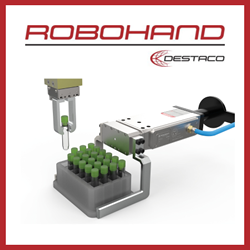We are building two types of animals: one animal which runs at the water surface (the "water strider") and one which goes down (the "great diver"). These pairs are the basic units of our system.
Interview with Shell Ocean Discovery XPRIZE Team ARGGONAUTS
Contributed by | ARGGONAUTS
How did you/your team decide to enter and pursue the Shell Ocean Discovery XPRIZE?
Our team was working in deep sea robotics, trying to make this technology affordable. When we read about the competition in trade journals, we knew that we would have to participate if we want to achieve a global leadership position in this field.
Describe your approach to underwater mapping and how it relates to mimicking bird/fish/insect behavior. Does it involve flying, diving and swarming?
A biological comparison would be a symbiosis. We are building two types of animals: one animal which runs at the water surface (the “water strider”) and one which goes down (the “great diver”). These pairs are the basic units of our system. In the first round we will build and use 5 such pairs. We have been using the names of those two kinds of insects internally since the beginning of the competition – also as a distant tribute to the Volkswagen Beetle, the low cost, high volume popular car that made owning a car affordable for many in many countries in the 1960s.

How does AI and robotics factor into your Shell Ocean Discovery XPRIZE solution?
We are working a lot of AI in our institute but in this competition we will only use AI to classify the images quickly (solving a big problem of many deep sea scientists). However, every aspect of mobile robotics is used. The list would be very long, from actor control over navigation to power management, sensor management, and sensor fusion etc. etc.
What kind of differences (pressure, light, temperature) do you expect to see in mapping the sea floor at 2,000 and 4,000 meters, as compared to current high resolution imaging at that has been done in much shallower sea floor areas, for example?
We think that in mapping the most difficult challenge will be the geo-referencing. We will use the water striders with their GNSS to set the position for the great divers and to transmit it acoustically. This will already be difficult at 2000m depth, because of the distance and the losses in signal level. To achieve a meter accuracy from a distance of 4000m, will however, be the biggest difference in difficulty between round one and two.
What challenges exist for the robotic components in your solution? What challenges do you see for the autonomous/hands-off functionality of your approach (AI focus)?
The biggest challenge is the autonomous recovery process. How can the water strider catch its great diver after the mission? But we found an excellent solution, patented and showed it to our national media in mid July: https://www.tagesschau.de/multimedia/video/video-309415.html
How is your XPRIZE team stretching the boundaries in regards to technology, integration, robotic skills and/or AI complexity? (Any or all)
There will be a life after the competition. Our main goals are robustness, size, weight and affordability. We are working on practical solutions that will solve practitioners’ problems in real life.
What have you found to be the most demanding part of your solution development so far? What might you see as the most difficult part of mapping at such deep depths?
Our biggest challenges are the short development time and the costs, availability and delivery times of some parts that we are buying from suppliers. We have developed new methods of agile product management to cope with these challenges
What provided the initial idea for your approach? Was there an “a-ha” moment?
One of the “a-ha” moments was when we discovered the robust inflatable catamarans and another one when we discovered the recovery process mentioned above.
What do you see in the future of robotic mapping of the ocean? Can your approach be applied to off-world, planetary exploration (fluid oceans of the Jupiter or Saturn moons, for example)?
It is our goal that we want to understand our own planet as good as mankind knows about Moon and Mars. We would be very happy if we could later discover thousands of archeological treasures, hundred thousands of life forms and many new ecosystems here on our own planet.
What would you/your team do if you win the Shell Ocean Discovery XPRIZE and what are your future plans for your innovations?
We will spin out a company. It will have to have a new name because of compliance with non-for-profit organization rules. It will be called Aronnax Maritime Technologies (from the novel of Jules Verne). Our robots will travel many times the 20 000 leagues under the sea described by Verne. We will lead the missions to the inner space of our own planet after decades of missions to outer space.
The content & opinions in this article are the author’s and do not necessarily represent the views of RoboticsTomorrow
Featured Product

